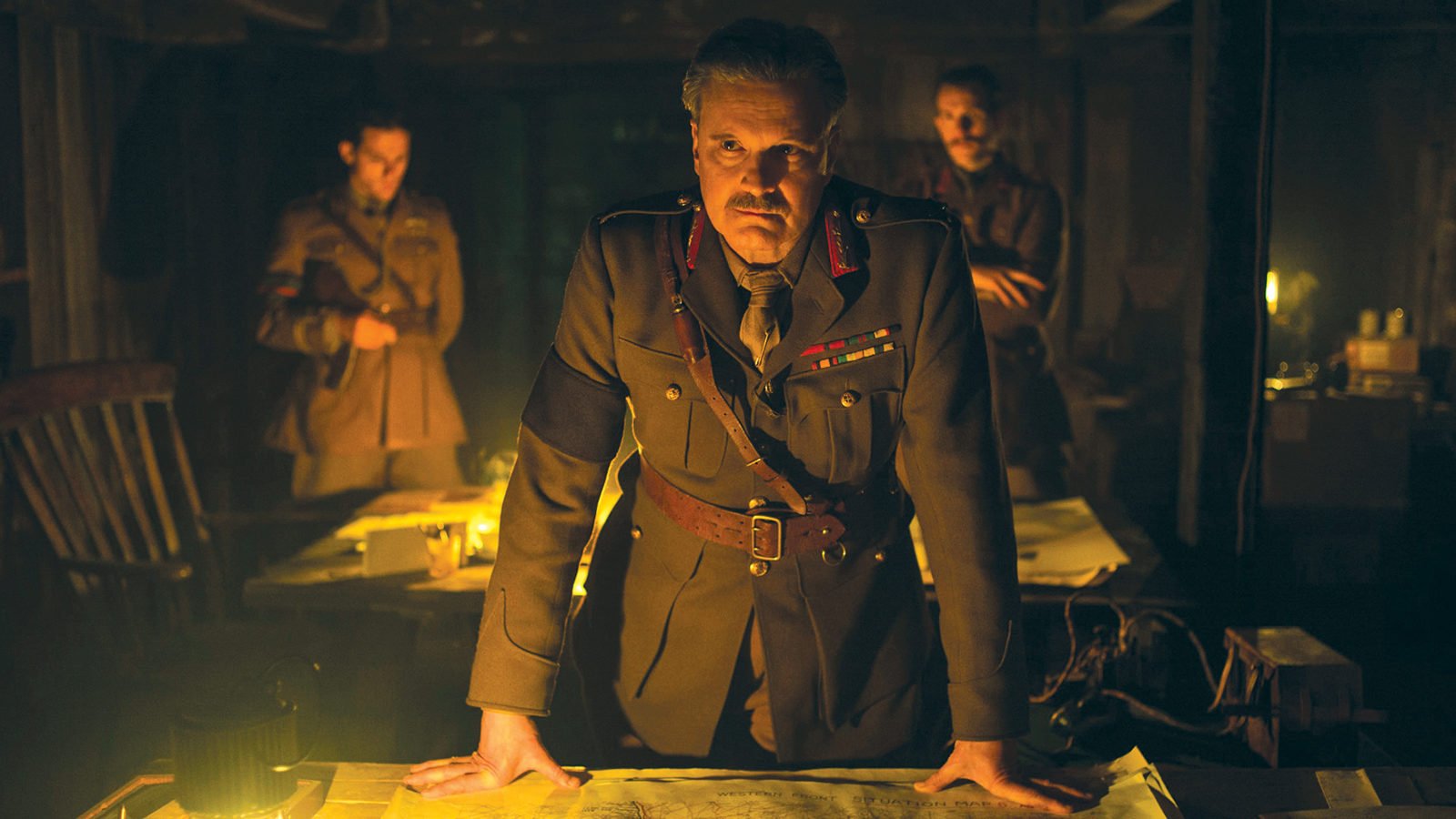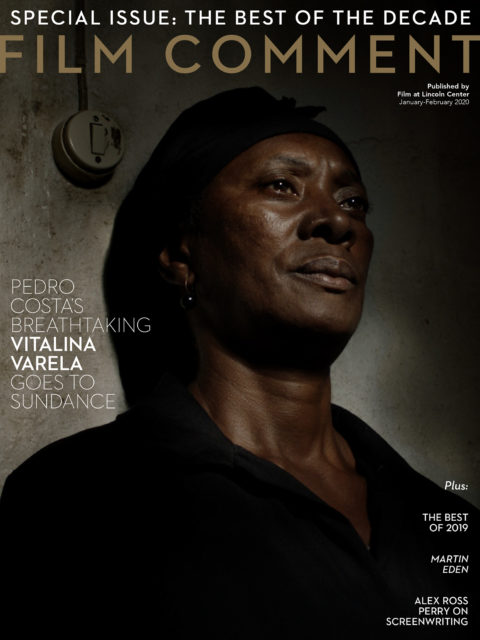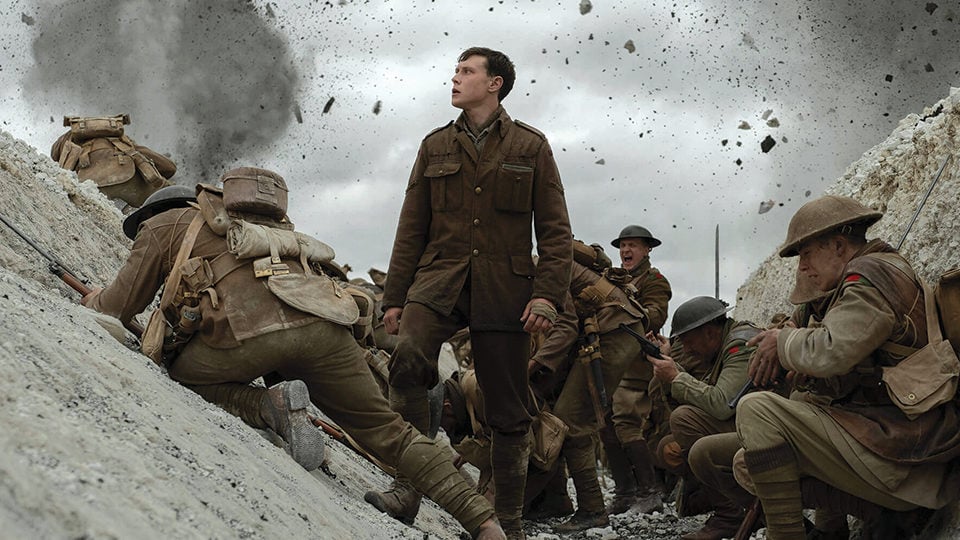By Nick Pinkerton in the January-February 2020 Issue

The Big Screen: 1917
Sam Mendes, UK/US, Universal Pictures, December 25
Sam Mendes’s 1917, which takes place amidst the carnage of World War I, is dedicated to the memory of the director/co-writer’s paternal grandfather, Alfred Mendes, a veteran of the Great War and later a writer of distinction. His film follows two enlisted English soldiers, played by George MacKay and Dean-Charles Chapman, on a mission to deliver a message concerning a German maneuver to a neighboring battalion that, if delivered on time, could potentially save hundreds of lives. It’s an homage to the heroism shown by the elder Mendes, and who could possibly protest such a filial gesture?

From the January-February 2020 Issue
Also in this issue
However faultless these ostensible motives for making 1917 may be, the experience of viewing the movie suggests a very different story: Mendes watching the endurance-test ordeal of The Revenant (2015) or the bravura single-take opening of Gravity (2013) and thinking “I could do something like that.” And with the aid of cinematographer Roger Deakins, a squadron of craftsmen and technicians, and a hundred million dollars, he has done it. The most noteworthy aesthetic gambit of 1917—evident from the opening, which follows a long walk-and-talk traveling shot that moves from a bucolic meadow into the endless, warren-like, increasingly filthy trenches—is the fact that it has been designed as a single, nearly unbroken moving shot. The exception is a “blackout” that proceeds when one character is knocked unconscious, though the camera is not fixed to the perspective of a single character and gambols off regularly on its own itinerary, whether to take in a piece of atmosphere—clouds of flies over putrefied horseflesh or the eerie lights of a city ablaze by night—or to generate a bit of suspense through selective concealment, as when it turns away at the crucial moment that a downed German aviator draws a deadly knife.

1917 (Sam Mendes, 2019)
Practically speaking, the technical accomplishment of 1917 would have been impossible 15 years ago. The rise of digital cinematography has meant the elimination of the time limits imposed by the traditional film magazine, so whereas Alfred Hitchcock had to find ways to cover the magazine changes in his one-take experiment, Rope (1948), Alexander Sokurov could shoot his Russian Ark (2002) in one 96-minute Steadicam meander through the Winter Palace in Russia’s Hermitage Museum. In an undertaking like 1917, with its multiple locations, intricate action sequences, and effects shots, engineering a true one-take would be practically impossible, but here postproduction innovations have come to the rescue, allowing the filmmakers to suture together various long takes into a seemingly seamless whole (as did Bi Gan in his Long Day’s Journey Into Night).
Certainly the most interesting aspect of 1917 is the resulting effect of anchoring characters in environment, and providing a sense of the sheer, awesome scale of the war, as in early scenes that have our couriers skirting massive, muddy craters left by heavy ordnance. Technical brio, however, cannot redeem all that is callow and crass in Mendes’s movie: the dialogue is pure placeholder stuffing, the approach a clumsy collision of the Assassin’s Creed video games and Elem Klimov’s Come and See; the muck-daubed stars register as 21st-century theater kids who’ve been instructed to issue routine “Fucks” for purposes of establishing “raw” authenticity; and the lyric grace notes—a field of cherry trees chopped down in blossom, an abandoned baby being nurtured in a basement in a bombed-out cityscape—strain for a pathos that’s out of reach. A late-film cameo by Benedict Cumberbatch gives the game away: dig a millimeter beneath the surface of the ubiquitous art-directed grime of 1917 and you’ll catch the antiseptic smell of the Great Anglo-American Prestige Picture, never more emotionally tidy or stylistically turgid.
Nick Pinkerton is a regular contributor to Film Comment and a member of the New York Film Critics Circle.







